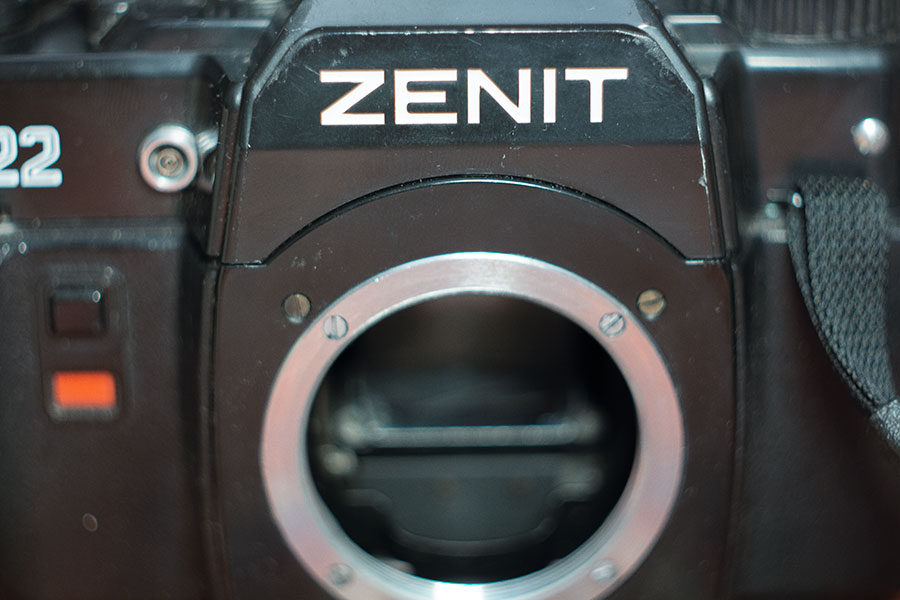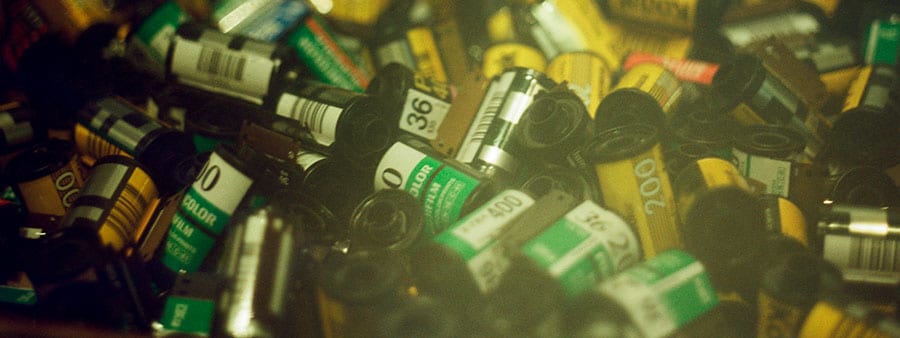How Does a Film Camera Work
In this article we will tell you about how does a film camera work from the moment you press the shutter button to the finished photograph.
In addition, we will tell you about the main components of a film camera and what affects the final result and what exactly in a film camera makes film photos special.

Structure of a Film Camera
To understand how does a film camera work, we will start with the structure of a film camera and find out what parts it consists of. We will consider the structure of a film camera using the example of an average SLR camera. Here we will not go into deep detail so as not to confuse you, but we will go through the most important components of a film camera.
Body

A camera body is what we usually imagine when we hear the word “camera”. This part is essentially a lightproof box. The main function of the body is to hold all parts of the camera together, as well as protect the internal parts from moisture and accidental exposure of the film.
It is in the camera body that the main components and parts for interacting with the camera are assembled, such as the shutter, ground glass, rewind mechanism, etc.
Lens

It consists of several lenses and works like a magnifying glass, helping to focus the light so that a clear image is formed on the film or digital sensor. Without a lens, the camera will not be able to properly “see” or “capture” what you want to photograph.
Lenses come in a variety of styles – some help you photograph objects that are far away (like a telescope), while others are good for photographing wide landscapes or large groups of people.
Shutter

The shutter on a camera is like a shutter or door that opens and closes to allow light to enter the film or digital image sensor. When you press the button to shoot, the shutter opens and closes quickly.
The shutter is used to control the amount of time light is exposed to the film or sensor. This time is called “exposure” or “shutter speed“. Keeping the shutter open for a long time allows a lot of light to hit the film, which is good for shooting in the dark.
Keeping it open for a very short time helps to capture a photo of a very fast moving subject without blurring. So the shutter helps control how bright or dark the photo is and how much it freezes motion.
Aperture

The aperture in a camera is like the pupil in the eye. It consists of several petals that can open or contract, thereby changing the size of the hole through which light passes. This hole is called an aperture.
The aperture is used to control the amount of light that hits the film or digital sensor inside the camera. When the aperture is large (wide open aperture), a lot of light enters the camera, which is good for shooting in dark conditions. If the hole is small (narrow aperture), less light enters, which is suitable for very bright lighting.
Aperture also affects depth of field, that is, how much of the photo will be in focus.
Film

The film in a camera is a special material that reacts to light and thus captures an image. This is a strip of plastic coated with a photosensitive layer.
When light passes through the lens and aperture onto the film, it causes a chemical reaction in that light-sensitive layer. This reaction creates a latent (invisible) image, which can then be developed using special chemicals, turning it into a visible photo.
Additional Components

But these are, of course, not all parts of the camera. It also has a bunch of other components that do not directly affect image acquisition, but somehow simplify this process. Such additional components include a photoflash, a rangefinder system, an electronic rewind mechanism, an exposure meter, etc.
Film comes in different light sensitivities, allowing photographers to choose the right type depending on the shooting conditions.
How a Does Film Camera Work

Here we will describe the principle of operation of the camera at the moment when you decided to take a photo and pressed the button. We will not describe the process of inserting film into the camera and the process of pulling it out, as well as the developing process. We will devote separate articles to all these processes. Now, let’s find out how does a film camera work and how it takes photographs.
Pressing the Shutter Button
When you press the camera’s shooting button, you begin the entire process. It’s like a starting signal. In the old days, the shutter release button was completely mechanical, and was directly connected to the shutter by mechanisms.
Opening the Shutter
Until the moment you pressed the shutter button, the light fell on the curtains located inside the camera that protect the film from exposure.
Think of the shutter as like curtains on a window that quickly open. This allows light to enter the camera. When the shutter opens, light begins to enter the camera to “paint” your image onto the film.
Light Hitting the Film
Light first passes through a lens, which acts like an eye or magnifying glass to focus the light. The light then hits the film. The film is very sensitive and “records” the light that hits it, creating an image.
Light will fall on the film as long as the shutter is open. How long the shutter is open affects how much light enters the image.
Creating a Negative Image
When light falls on the film, or more precisely on the photosensitive layer of the film, it affects the silver ions, which in turn creates a latent image.
Because the flips the image from top to bottom and left to right, you end up with a negative image in terms of both color and space.
Closing the Shutter
After the film has captured the moment, the shutter closes. This stops light from reaching the film, ending the photographic process.
But of course, this does not mean that you can open the back cover of the camera, because if you do this, the light will again fall on the film and destroy the previously taken photo. This film can only be viewed in light after the development process.
Conclusion

A film camera is a complex system in which each component plays a key role in the photographic process. From mechanical precision to film chemistry, all elements work together to capture and preserve moments in physical form.
Knowing how does a film camera work and what is the basis of film photography is extremely important for any film photographer. This knowledge simplifies both the shooting process and helps to gain a deeper understanding of the essence of film photography.







